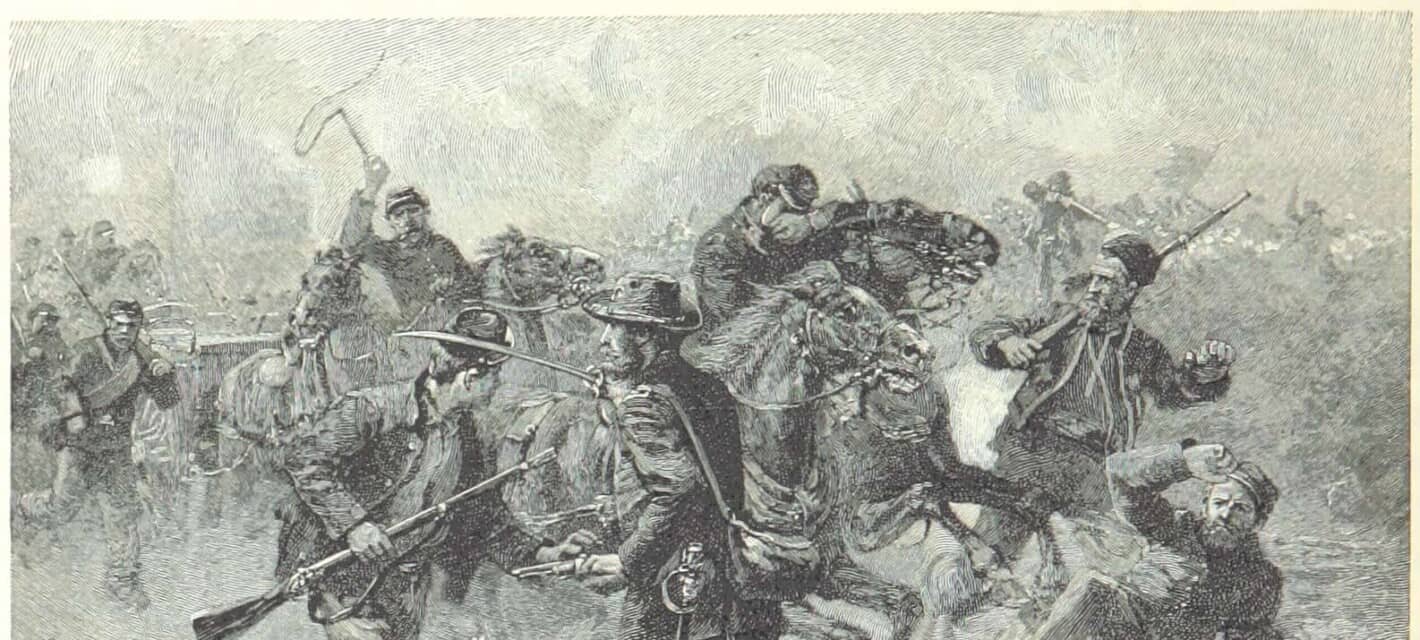In warfare, few things can increase a combatant’s chances of success more than a well executed surprise attack that catches an opponent off guard. The suddenness of an unexpected onslaught, especially against unprepared opponents who had let their guard down, can be devastating. Even more so if the surprise attack is followed through aggressively, without allowing its victims a breather to collect their wits and come up with an effective response.
Following are sixteen of history’s most successful and dramatic surprise attacks.

1. Stonewall Jackson’s Surprise Flank Attack at Chancellorsville
In December of 1862, the Union’s Army of the Potomac suffered a bloody setback when it crossed the Rappahannock river and attacked the Confederates occupying strong defensive positions near Fredericksburg. The Union forces were given a new commander, Joseph “Fighting Joe” Hooker. Realizing that a frontal assault on the Confederates near Fredericksburg was doomed to fail, Hooker decided to get at them from the rear.
Hooker had about 134,000 men, while the Confederates, under Robert E. Lee, had roughly 61,000. On April 30th, 1863, Hooker left 28,000 men in front of Fredericksburg to keep Lee occupied, and marched westward with 106,000 men to cross the Rappahannock upstream from the Confederates. Hooker planned to fall on Lee’s rear, and catch him in a pincer between the forces under his command and those left behind at Fredericksburg.
Hooker stole a march on Lee, and got in his rear by crossing the Rappahannock in heavily wooded terrain north of Chancellorsville. However, Lee was not one to leave the initiative to his enemy if he could help it. When he discovered what Hooker had done, Lee divided his army, leaving a small rearguard behind in Fredericksburg, and took the bulk of his men, about 45,000 Confederates, to meet Hooker. In so doing, Lee violated conventional wisdom against dividing one’s forces in the face of a numerically superior enemy.
When he neared Chancellorsville, Lee doubled down on violating conventional wisdom by further dividing his already outnumbered army. He confronted 70,000 Union soldiers with only 13,000 Confederates east of Chancellorsville, and sent his chief lieutenant, Stonewall Jackson, on a flanking march to fall on Hooker’s right flank. On May 2nd, while Confederate cavalry screened his flank to keep the Union force from observing him, Jackson led about 28,000 men on a 12 mile roundabout march that brought him, undetected, to Hooker’s right flank.
Late that afternoon, Jackson launched a devastating surprise attack against the XI Corps on the Union army’s right flank, just as its men were sitting down for dinner. It caught them completely off guard, and sent them on a panicked rout that soon sowed confusion throughout Hooker’s army. Jackson’s advance was only halted by the fall of darkness. Hooker, psychologically defeated and concussed from a shell that struck a post against which he was leaning, conceded defeat and withdrew. Chancellorsville would go down as Robert E. Lee’s “perfect battle”, and is taught in military academies to this day.

